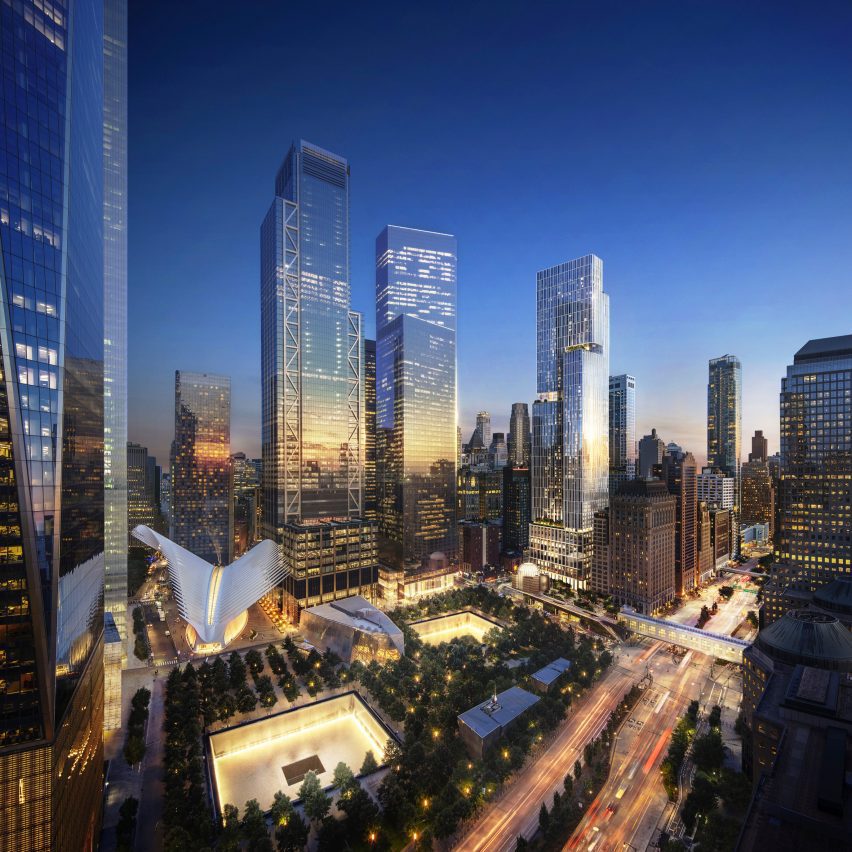
The attack on the World Trade Center 20 years ago had a significant impact on skyscraper design. Continuing our 9/11 anniversary series we look at how skyscrapers will change over the next two decades.
The coronavirus pandemic and climate change will be two of the biggest influences on skyscraper design over the next 20 years, according to experts.
"I think environment and health are two fundamental things, above security, that challenge us all in the industry of the paradigm of the skyscraper," said Gary Kamemoto, principal at Maki and Associates, which designed the 4 World Trade Center skyscraper.
"Covid-19, in a certain way, is a terror threat right now," he told Dezeen, "and I think every single country is grappling with it in many creative and different ways."
Kamemoto made his comments in reference to the terrorist attacks in the USA on 11 September 2001, which played a significant role in the evolution of skyscrapers over the past two decades.
Ventilation in highrises "needs to be addressed"
Contemporary skyscrapers are still typically designed as sealed environments with predominantly glazed exteriors, which rely heavily on artificial ventilation to prevent overheating.
However, in light of the pandemic, Kamemoto thinks there will be greater demand for naturally ventilated skyscrapers with openable windows to help create healthier internal environments.
Georgina Robledo, a partner at Rogers Stirk Harbour + Partners which also designed a skyscraper on the World Trade Center site, agreed.
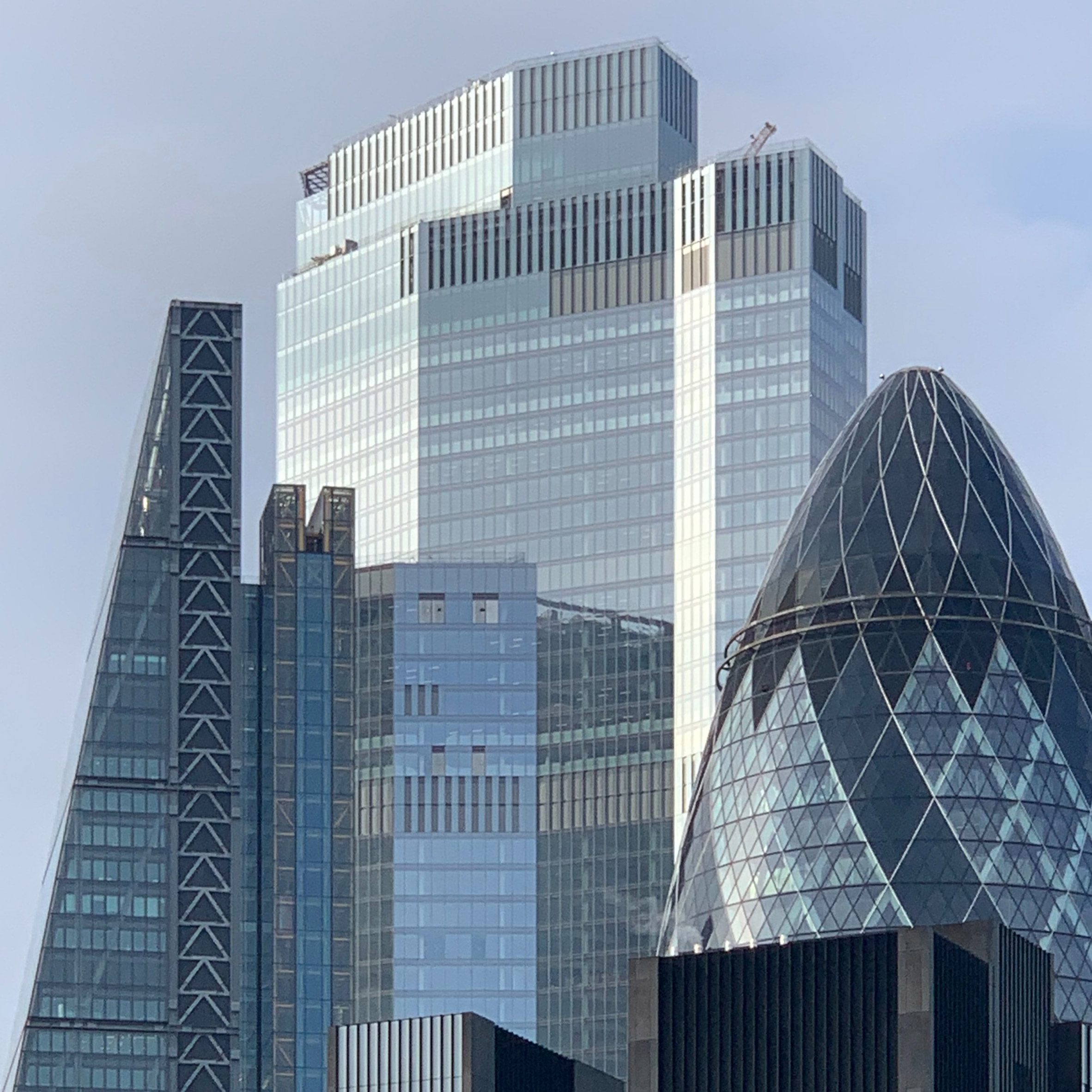
"Not to be a cliche, but we have to recognise the change after Covid," Robledo said. "That is a discussion about ventilated spaces and ventilation in highrises."
"I think more ventilated facades are going to come into play, and not just openable windows, I think it's a technology that allows for that fresh air intake at high rise level," she continued.
Kamemoto added that maximising the natural ventilation of skyscrapers can also help reduce their overall carbon footprint.
"High-rise buildings are very energy-consuming," Kamemoto said.
"And for the most part, until recent years, they're completely kind of divorced from the exterior environment, they're completely sealed off, so they depend very highly on artificial ventilators."
With a host of countries now committing to becoming carbon neutral by 2050 to tackle the climate emergency, he said "that whole paradigm has to change".
Photovoltaic surfaces may replace curtain walls
A focus on making skyscrapers more sustainable may also lead to the end of the trend of heavily glazed exteriors, according to Ung-Joo Scott Lee, the New York-based partner at US studio Morphosis.
"I'm not sure if the large use of glass will go on forever," he told Dezeen.
Instead, he said architects should "limit the amount of glass to areas where you really need the view" and experiment with facades that are more opaque or lined with photovoltaics.
"In New York City, some of the most beautiful buildings that you see were done almost 100 years ago," he explained, "they're masonry buildings with more limited windows."
Gensler's chief operating officer Dan Winey told Dezeen that he believes the next 20 years could even see the use of curtain wall systems as electricity generators. Strides have already been made in developing photovoltaic surfaces too, he said, citing Tesla's Solar Roof shingles that are being developed as a way to power homes.
"I think you are going to see curtain walls and buildings that will generate electricity through solar," Winey explained. "The curtain walls themselves will become power generating and they will generate more power than they need."
Avoiding glass will offer "a sense of craft and texture"
Moving on from curtain walls also presents an opportunity to reintroduce texture into skyscrapers, like those built in the 20th century, said James von Klemperer, president at Kohn Pedersen Fox, which has designed four of the world's top 10 tallest buildings.
Von Klemperer described glass facades as "rather blank and inaccessible" and said using more tactile materials like terracotta or masonry can help to humanise them.
"I think we all feel, as a community of architects that we all created and had built too many large expanses of glass in our cities," he explained.
"The way the light comes on to masonry buildings, on the other hand...I was on the top of One Vanderbilt looking down just last night as the sun was setting and to see that light play on the masonry of the city of the 1920s, 1930s, 1940s and even 1950s is really gratifying."
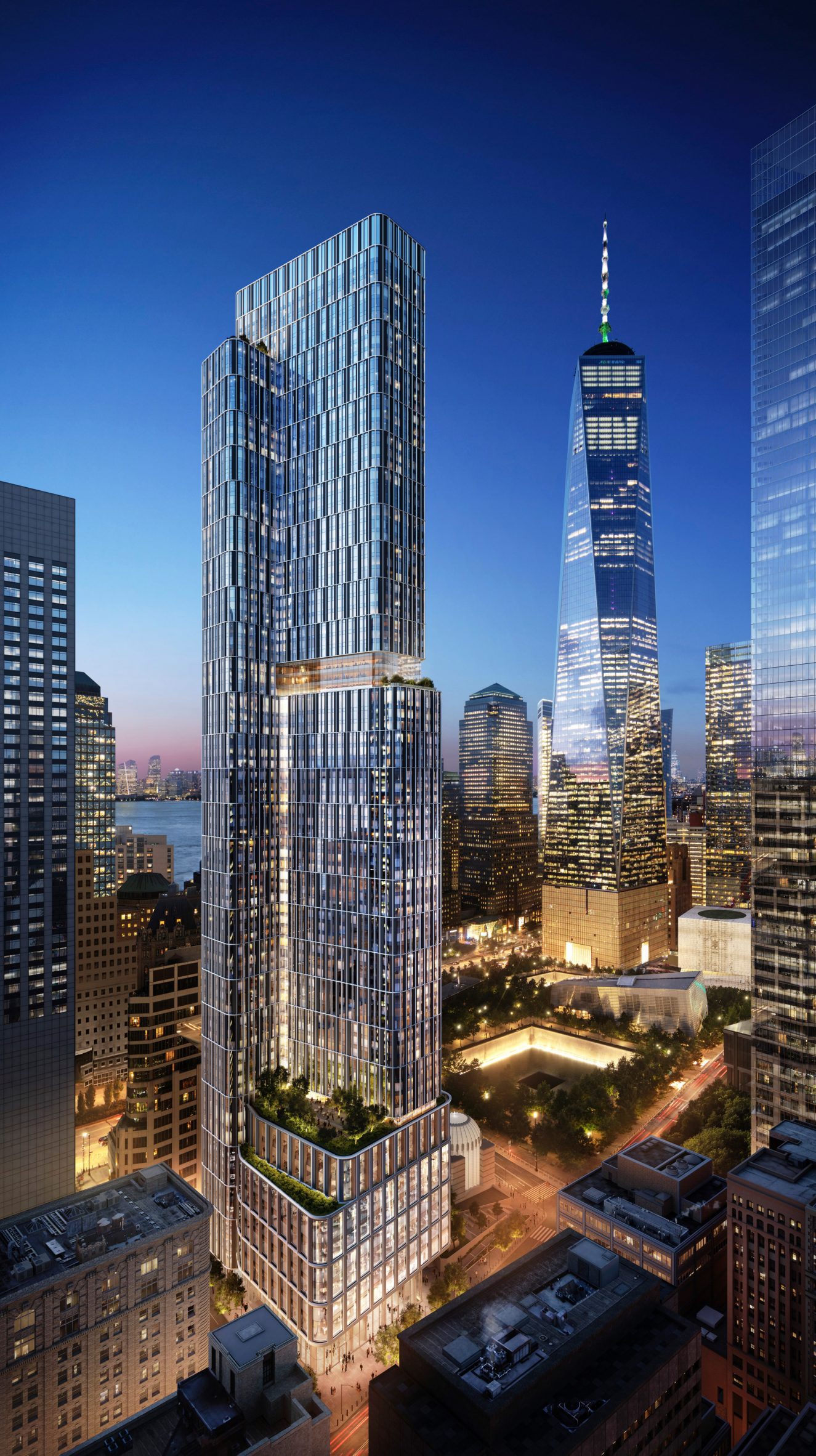
This is something that Kohn Pedersen Fox is striving to achieve in its design of the 5 World Trade Centre skyscraper, which is set to break ground soon at the Ground Zero site.
"What we're trying to do with the tall building today is to humanise it in a sense, to recapture some of the scales of an indication of craft which we love in smaller buildings," he explained.
"I think our 5 World Trade Centre building will have some of that recovery, of sense of craft and texture," he continued. "And as far as architectural design can have an influence on our lives, that's very important."
Timber structures could become more common
Maki and Associates' Kamemoto is expecting more frequent use of sustainable materials such as timber in the construction of future skyscrapers.
There has been a recent resurgence in the popularity of wood as a construction material due to its ability to sequester carbon from the atmosphere, but improvements in engineered timbers such as cross-laminated timber (CLT) has also made it more appealing to architects.
"Taking timber construction to a whole new kind of level in high rise design, we've seen that and that is ongoing," Kamemoto explained.
For example, he said, in Tokyo the Japanese timber company Sumitomo Forestry is developing the 350-metre W350 skyscraper.
If built, it will steal the title of the world's tallest timber building from the 85.4-metre-high Mjøstårnet, which has been designed by Voll Arkitekter in Brumunddal, Norway.
More mixed-use skyscrapers expected
One of the biggest changes to skyscrapers in the last two decades has been an increase in mixed-use programmes. Several skyscraper designers believe this trend will only become more common in the future.
Von Klemperer of Kohn Pedersen Fox said mixed-use skyscrapers can help ensure skyscrapers become better assets for the community.
They can also help people to achieve a better work-life balance, he said. For example, a highrise containing workspace and daycare facilities could allow an office worker to spend more time with their child.
"A tall building doesn't have to be only a residential building or only an office building," Von Klemperer explained. "I think because a diversity of use and mixing of uses is good for us, in satisfying the things that we need in our lives."
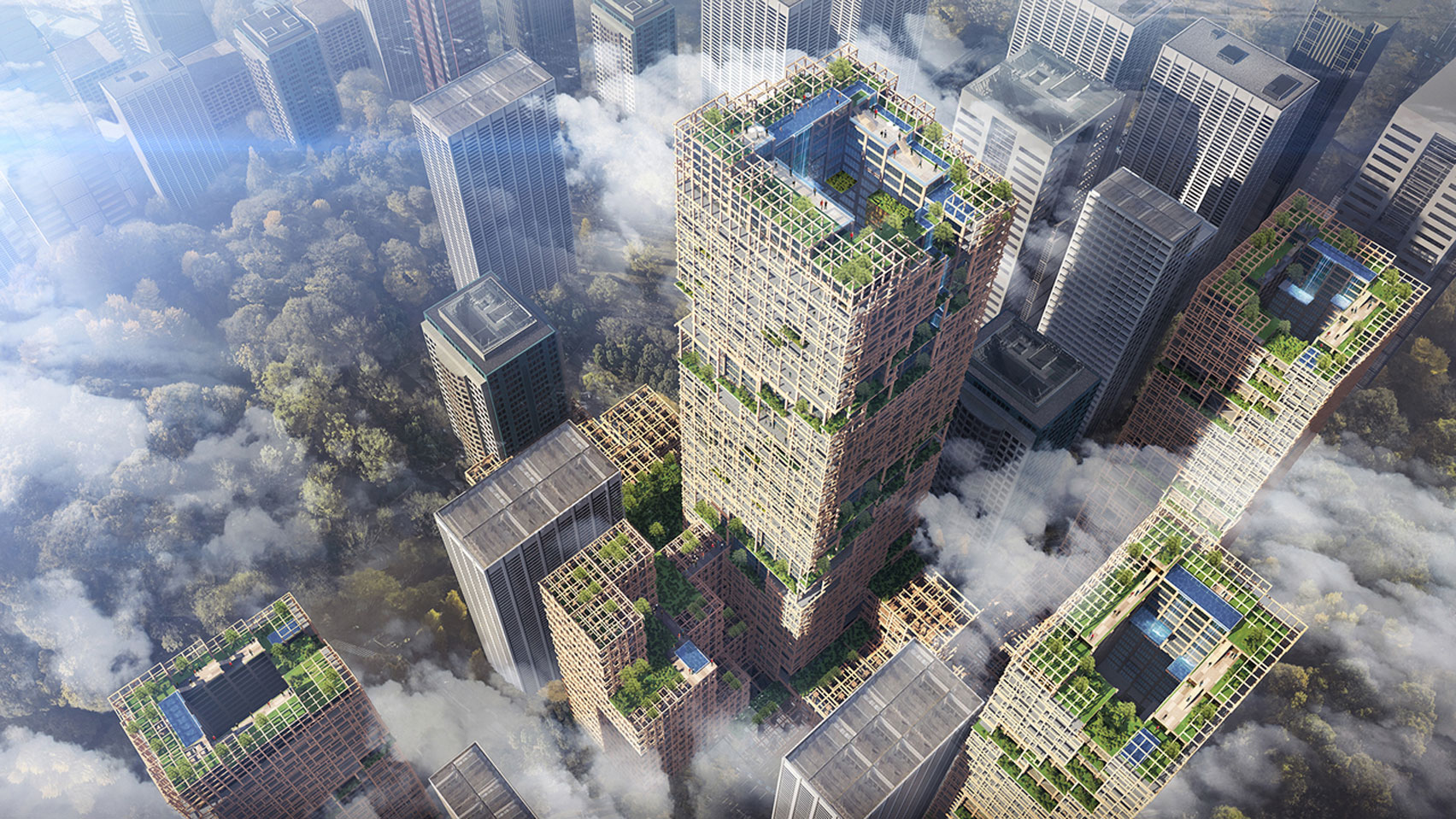
Both Chris Lepine, partner at London-based Zaha Hadid Architects and Gensler's chief operating officer Winey believe the rise of mixed-use skyscrapers will also create more opportunities for nature, greenery and farming in cities.
"Skyscrapers will continue evolving to be more human-centric with increasing levels of biophilic design and better amenities," Lepine told Dezeen.
"We'll also see an increase in different tower programmes with vertical structures accommodating varying degrees of mixed-use, public sky gardens, and even vertical farming."
Skybridges could make skyscrapers safer
While taking steps to minimise the impact of skyscrapers on the planet, some architects believe they must also be designed to protect occupants from the effects of a changing climate.
Eui-Sung Yi, the Los Angeles-based partner Morphosis, said designing against flooding will be particularly important.
These conversations began in 2012 when Hurricane Sandy hit New York and caused widespread flooding, he told Dezeen, as "people realised that if you're in a skyscraper in a high rise, you're effectively trapped".
As such, Yi believes "a network of higher infrastructure" including bridges between skyscrapers could become commonplace, ensuring the ground floor is not "the only connective tissue".
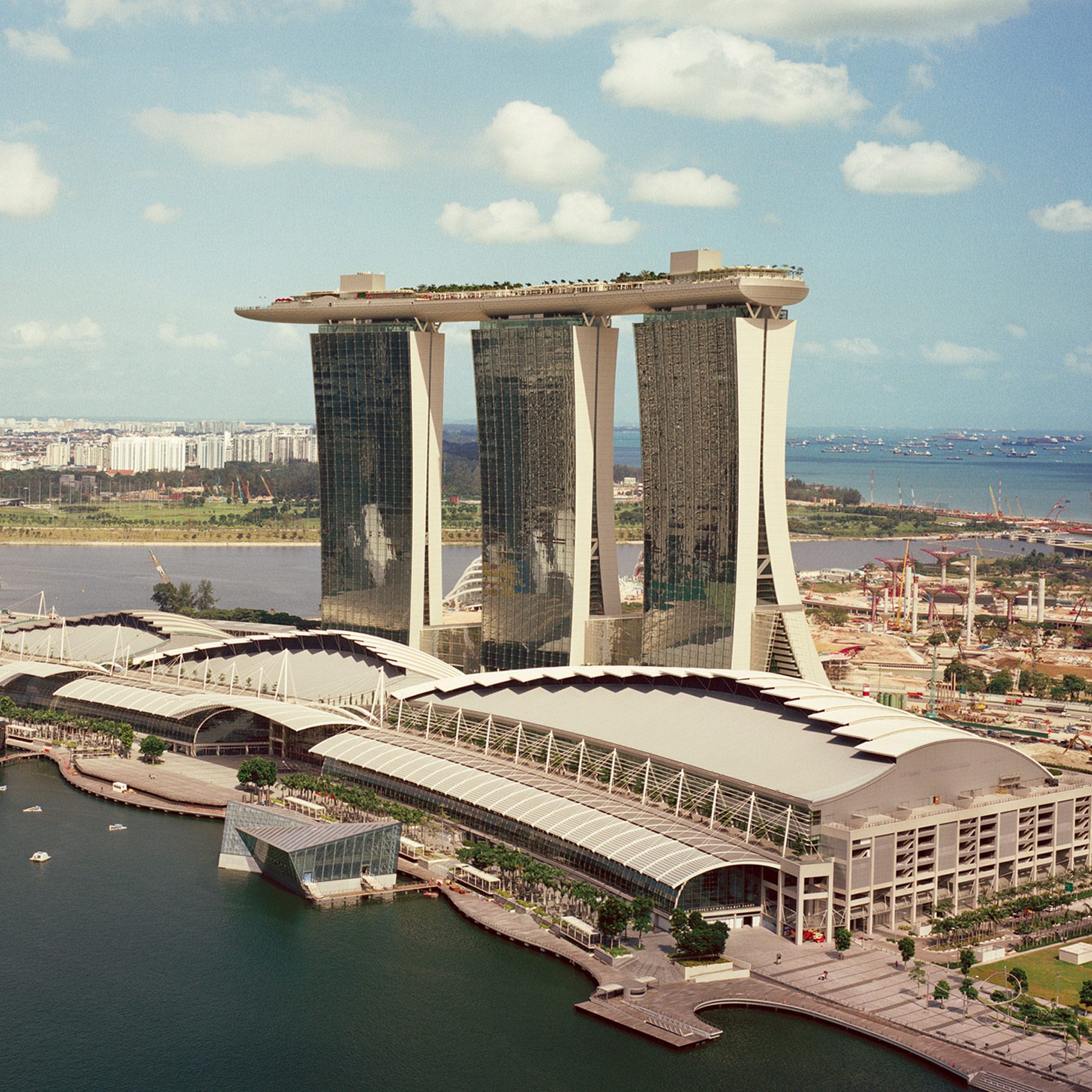
Morphosis partner Lee added that an increased risk of flooding will also require critical building services to be brought above flood plains, rather than hidden in basements as they have been previously.
"The requirement now in New York City is that things like emergency generators, connections to your actual power grid, all have to be outside from the flood plain," he explained.
"That's making the typology safer, and in fact, probably safer than other types of buildings around."
Skyscrapers are "a necessity"
One thing that several architects agreed on is that skyscrapers will remain a vital building typology over the next two decades and into the future.
SOM partner Ken Lewis explained that this is because cities must accommodate growing populations and that towers are the most efficient way to ensure this.
"Cities of the future will need to be even denser to accommodate predicted population growth," he said. "From an urban planning perspective, towers are the most sustainable answer."
Daniel Libeskind, the architect behind the rebuilding of Ground Zero, added that highrises are also an effective way to tackle car hegemony in cities and minimise consumption of land.
"If you don't want to consume more and more land and keep building out and out and out and reinforcing cars and so on, you have to build densely," Libeskind said. "That's why cities originated."
"We cannot consume land by building low buildings and eating up what's leftover of the nature we already managed to destroy," he continued. "[Building tall] is a necessity."
However, Libeskind added that the desire for skyscrapers also goes "beyond the necessity".
"There's a magic to tall buildings," he concluded, "a sort of primordial sense of joy of being able to dominate the city you are in from a higher perspective."
"The truth is that when you're in a high rise in a skyscraper, it's just so liberating in many ways."
9/11 anniversary
This article is part of Dezeen's 9/11 anniversary series marking the 20th anniversary of the terrorist attack on the World Trade Center.
The main image is courtesy of KPF.
The post Climate change means "whole paradigm has to change" for skyscrapers appeared first on Dezeen.
from Dezeen https://ift.tt/38SgGDA
No comments:
Post a Comment